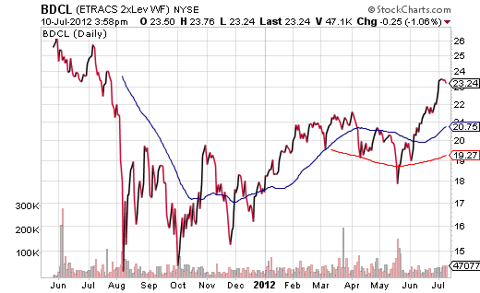Basics of ETN Investing
Post on: 11 Апрель, 2015 No Comment

Perhaps youve noticed that many of the investment vehicles in the ETF industry are technically referred to as exchange-traded notes. or ETNs. While ETNs are similar to ETFs in many ways, there are also some key differences that should be considered before investing.
More Alike Than Different
ETNs share many of the same advantages of ETFs compared to traditional actively-managed mutual funds. ETNs track the performance of an index (or individual asset). They also maintain relatively low expense ratios, may offer some unique tax advantages (more on this below), and feature lower minimum investment levels and greater transparency. So in many important respects, ETNs are similar to their ETF cousins.
Underlying Assets
Whereas ETFs typically offer investors exposure to various equity markets. many ETNs seek to mimic the return of certain commodity and currency markets (there are, however, several ETNs that offer exposure to various equity markets). The chart below lists several ETNs, along with the markets or assets to which they offer exposure (note that this list is far from exhaustive).
The primary difference between ETFs and ETNs relates to the underlying assets held by each. ETFs generally hold the stocks that comprise the index they attempt to track. ETNs, on the other hand, are actually unsecured debt notes. If held to maturity, investors will receive a cash payment that is linked to the performance of the specified index between the issue of the ETN and its maturity. Whereas the purchaser of an ETF is buying an interest in a diversified portfolio of stocks, the purchaser of an ETN is buying a debt instrument.
Disadvantages of ETNs
If an ETF issuer goes bankrupt, investors have a claim on the underlying securities held by the fund. With ETNs, however, if the issuer goes bankrupt, investors may be out of luck, since the ETN sponsor doesnt necessarily hold the underlying assets tied to the funds payout. As such, the credit quality of ETN issuers deserves some consideration when investigating potential investments. Since holders of ETNs are subject to counterparty risk, an ETN investment may lose value if the underwriter of the note experiences a credit rating downgrade, even if the fundamentals of the underlying asset or index would otherwise indicate a gain.

ETNs may also lack certain of the tax efficient features of ETFs. The IRS has ruled that gains and income from single currency ETNs are to be taxed at ordinary income rates, as opposed to capital gains rates. The Service is yet to rule on other tax aspects of ETNs that could further diminish their appeal with regards to tax efficiency.
Advantages of ETNs
ETNs also have certain advantages over ETFs. Because ETNs arent funds, they dont rely on equity investments to track their underlying index. Rather, the fund issuer agrees to make a payment to investors upon maturity of the note based upon the price level of the specified asset or index. While most ETFs do an excellent job of tracking the returns of their subject index. they are also subject to tracking errors for a number of reasons. ETNs, on the other hand, have no tracking error since the cash payment due upon maturity is directly tied to the level of the corresponding index.
ETN Industry
Despite the counterparty risk, ETNs have become tremendously popular investment vehicles. DJP. iPaths diversified commodity ETN, has a market cap of more than $1 billion, and both OIL and INP have topped the $500 million mark. Although iPath is the premier ETN sponsor in the market today, several other firms have introduced successful ETNs as well, including ELEMENTS and US Commodity. Look for ETNs to continue to attract cash if risk aversion continues to subside and investors gradually regain comfort with placing speculative bets on currency and commodity price movements.














